
The family Fulgoridae is a large group of hemipteran insects, especially abundant and diverse in the tropics, containing over 125 genera worldwide. They are mostly of moderate to large size, many with a superficial resemblance to Lepidoptera due to their brilliant and varied coloration. Various genera and species are sometimes referred to as lanternflies or lanthorn flies, but neither do their heads emit light, nor are they even distantly related to flies.

Pyrops is a genus of planthoppers that occur primarily in southeast Asia, containing about 70 species. They are fairly large insects, with much of the length due to an elongated, upcurving, snout-like projection of the head. The wings are generally brightly patterned in contrasting colors, and they are popular among collectors.

Ricaniidae is a family of planthopper insects, containing over 400 species worldwide. The highest diversity is in tropical Africa and Asia and in Australia, with a few species occurring in the Palearctic and Neotropical realms. It is one of the smaller families in the planthopper superfamily Fulgoroidea.
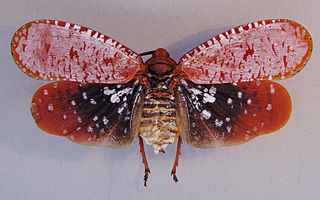
The subfamily Aphaeninae is a group of hemipteran insects, especially abundant and diverse in the tropics, in the family Fulgoridae, or "lanternflies".

Cercopidae are the largest family of Cercopoidea, a xylem-feeding insect group, commonly called froghoppers or spittlebugs. They belong to the hemipteran suborder Auchenorrhyncha. A 2023 phylogenetic study of the family suggested the elevation of subfamily Ischnorhininae to full family status as Ischnorhinidae, leaving a monophyletic Cercopinae.

Issidae is a family of planthoppers described by Spinola in 1839, belonging to the order Hemiptera, suborder Auchenorrhyncha superfamily Fulgoroidea.

Nogodinidae is a family of planthoppers. They have membranous wings with delicate venation and can be confused with members of other Fulgoroid families such as the Issidae and Tropiduchidae. Some authors treat it as a subfamily of the Issidae.
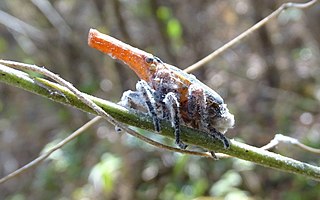
Zanna tenebrosa is a large planthopper in the subfamily Zanninae in the family Fulgoridae. The nymphs are sometimes referred to as lantern-flies because of their large lantern like snout, although this does not emit light. This species occurs in mainland Africa, and also in Madagascar, where it has often been known under the name Zanna madagascariensis, and referred to there as the Malagasy lantern bug.

Achilidae is a family of planthoppers, sometimes called "achilids" in the order Hemiptera. There are at least 520 described species in Achilidae.

Polydictya is a genus of planthoppers in the sub-family Poiocerinae Haupt, 1929. Species are distributed from India, through Indo-China, to Malesia.

Dictyopharinae is a subfamily of dictyopharid planthoppers in the family Dictyopharidae. There more than 100 genera and 500 described species in Dictyopharinae.

The subfamily Poiocerinae include Hemipteran insects in the family Fulgoridae, found especially in the tropics.
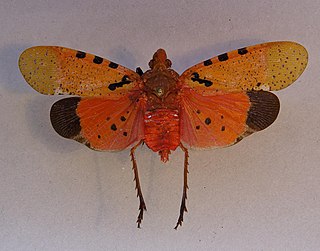
Belbina is a genus of planthoppers in the subfamily Enchophorinae (Fulgoridae): erected by Carl Stål in 1863; There are some 12 species presently known, occurring in Madagascar.
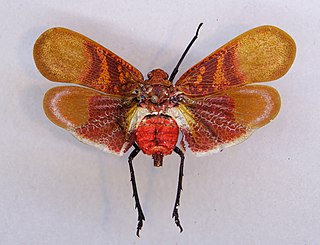
Scamandra is a genus of planthoppers in the subfamily Aphaeninae (Fulgoridae): found in Malesia.
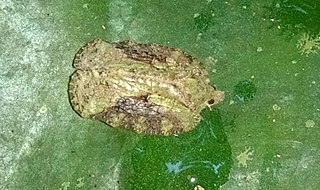
Atracis is a genus of flatid planthopper with around 60 species distributed in the Oriental Realm and tropical Africa.
Acmonia is a genus of planthoppers in the family Fulgoridae, subfamily Poiocerinae. Species are distributed throughout Central America and South America.

Flatida is a genus of planthoppers in the family Flatidae and tribe Phromniini. Much of the literature on this genus refers to the name Phromnia, which has recently been recognized to be a junior synonym of Flatida. Species from the genus are found in tropical Africa and Asia.

The Nogodininae are a sub-family of tropical planthoppers erected by Leopold Melichar in 1898. The recorded distribution is: South America, Africa and the Middle East, South and SE Asia through to Australia.

Scaralis is a genus of planthoppers in the family Fulgoridae occurring in Central America and South America. The genus contains 13 species, placed into two subgenera.





















